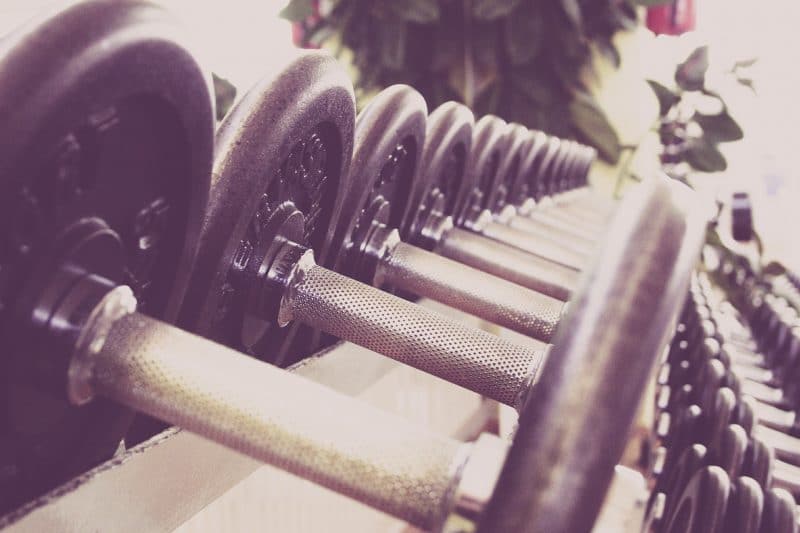High-intensity interval training is one of the most widespread and popular types of workouts among professional athletes, and with good reason.
It’s one of the best ways to put your body under a lot of stress in a short period of time, and get fantastic results as quickly as possible. That being said, HIIT is also one of the most challenging types of exercises and should be approached with care, lest you risk demotivating yourself and giving up right away or, even worse, succumbing to any unnecessary injuries along the way.
In order to make sure none of this happens, we’re going to teach you just how to start doing HIIT if you’re a complete beginner, and we’re going to break it down into 4 easy steps that anyone can understand.

1. The Basics
Before you even start working out, you’re going to want to know what you’re getting yourself into, and that means learning as much about HIIT as you possibly can. For now, though, it’s enough that you just know some of the basic stuff, so you can start a workout regime without having to do a lot of guesswork about everything.
HIIT’s very name suggests what the whole thing is about. It’s a type of training that incorporates workouts of very high intensity in time intervals. This means that, for example, you do a number of weighted push ups for 30 seconds, and then you get 10 seconds of rest, after which you repeat the exercise. The rest periods are there to help your body recuperate a little bit, but not enough so the exercise isn’t effective.
After a few of these cycles, if you’re performing the exercise correctly you’ll most likely feel drained, your muscles will be all shaky and you’ll be breaking some serious sweat. HIIT not only puts a lot of pressure on your musculature, but your nervous system is also significantly affected, which has its own wide array of benefits: first, your metabolism will kick itself into high gear, burn more energy and therefore more fat, your blood flow will improve which is great for your cardiovascular health, and your body will start secreting more anabolic hormones, which means additional muscle growth.

2. The Volume
In this case, the volume of the exercise refers to how often you do high-intensity interval workouts per week. As we already mentioned, high-intensity interval training is very taxing to your body, and therefore after the workout it should be given some time to recover. When you’re just starting off, you really shouldn’t engage in HIIT more than twice or even once a week.
I know this seems like it’s not enough, but trust me, after your first well-coordinated HIIT session, the last thing you’ll want to do for a while is go back and do it again. And that’s not to say that if you do HIIT, you have to spend the rest of the week just resting. Other types of workouts that are not HIIT are perfectly fine, just as long as you don’t overdo them and still give your body an opportunity to recuperate appropriately in time for your next HIIT session. As you progress further, you can increase the volume to twice a week and then finally to three times a week. If you’re not a professional athlete, this is generally where you should stop, as three times is plenty for you to get all the benefits of HIIT without burning yourself out in the long run.
3. The Intensity
Another important aspect in HIIT is the intensity of the workout, and this specifically means the ratio between your “active time” and your “rest time”. Obviously, the lower this ratio is, the more intense the workout is. A 1:9 ratio, for example, means that you perform the exercise for 10 seconds, and then rest for 90 seconds.
This allows your body plenty of time to recuperate before the next interval and such a ratio is generally considered appropriate for people who are just starting to perform HIIT. As you progress further, you can start introducing lower and lower ratios, until finally you get to something like 1:3. Again, the lower the ratio is, the more you will push your body and the more intensity your workout will have, and ultimately you’ll need less time to accomplish more, which is the whole point of HIIT – short bursts of highly effective exercises that put your body through its paces and guarantee you a killer workout.

4. Track Your Progress
A good HIIT workout will force you to monitor a lot of different factors, such as your total sets/reps, your active and rest times, and so on. Since you’re not about to bring a huge old notebook to the gym and write all this down, this is best done with some kind of fitness app. There are many highly useful ones out there that you can use, although there’s a chance that some of them have some geo-blocking restrictions, so make sure that you have access to a ExpressVPN, just in case.
Summary
Starting a good HIIT routine and sticking to it will definitely not be easy, but if you decide to follow through, you’ll find that there’s really no better way to get your body in shape, and fast.
To sum up, you should start off with lower volumes and then gradually increase it as you get stronger. Same with intensity; a 1:9 ratio is a comfortable starting point for most people, and as you progress further you can start slowly lowering it until you get down to 1:3. And of course, be sure to track your progress with a good fitness app.
If you have any experiences or questions about HIIT, feel free to share them in the comments below. Good luck!
